Unlike the depiction in Braveheart (1995), the Battle of Stirling Bridge was fought near a wooden bridge, and not in an open field. Before the English could finish crossing, the Scots attacked. In the frenzy to retreat back over the bridge, the whole thing collapse in the River Forth. Many of the English drowned while those trapped on the wrong side were slaughtered by William Wallace, Andrew Murray, and the rest of the Scots.
Since the original bridge collapsed in the 1297 battle, visitors to Stirling might be misled by the stone bridge that stands in its place.
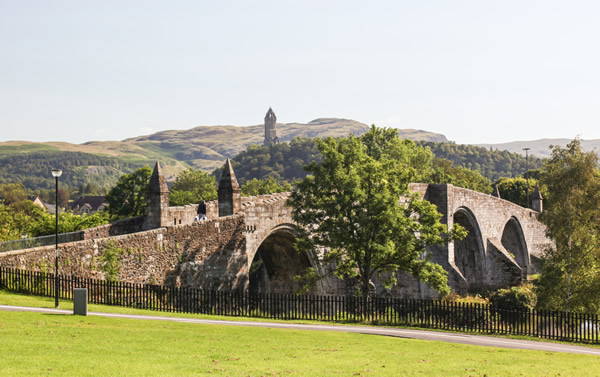
The bridge is 1 of 3 other bridges in Stirling, the other 2 being modern.
Constructed sometime in the 16th-century, this post-medieval bridge was built to last unlike its wooden predecessor. In addition, the original bridge was only wide enough for two horses. The new one could handle large vehicles, but is for pedestrian use only nowadays.
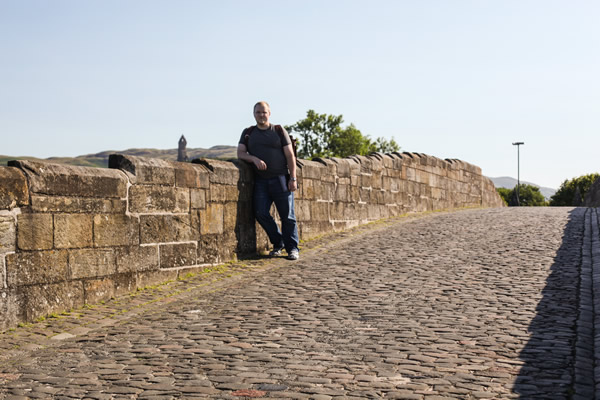
Still, the plaque at the end of the bridge is misleading, claiming that this was the site of the Battle of Stirling Bridge.
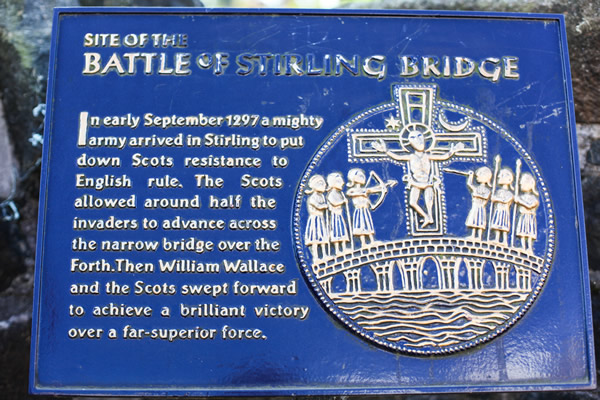
So where was the original bridge? For over 600 years, we had no clue. In 1905, someone discovered the base of the original bridge, roughly 65 to 75 yards upstream of the stone bridge. After archeological surveys in the 1990s, 4 of the original piers were found. In addition, it became apparent that the bridge did not cross at a right-angle, but instead diagonally. ((Ronald Page, “The Ancient Bridge of Stirling: Investigations 1988-2000,” Scottish Archaeological Journal 23, no. 2 (2001): 144, 148, 162.))
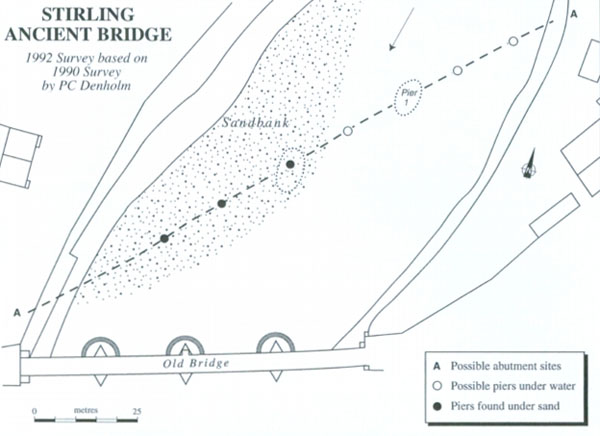
The diagonal positioning of the bridge led surveyors to the conclusion that it would have required 8 piers, the same number of piers represented on the Old Common Seal of the Burgh of Stirling, depicted in the plaque above and sketched below. The earliest surviving use of the seal was 1296, a year before the battle. This was also the earliest known depiction of the bridge. ((Ronald Page, “The Ancient Bridge of Stirling: Investigations 1988-2000,” Scottish Archaeological Journal 23, no. 2 (2001): 142.))
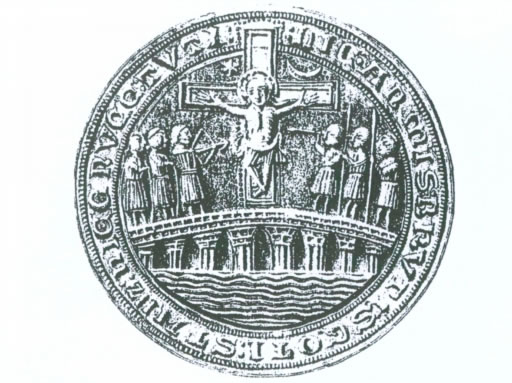
So with that in mind, if you are traveling on the Stirling Bridge, be sure to turn to the north to see where original Stirling Bridge collapsed in 1297.
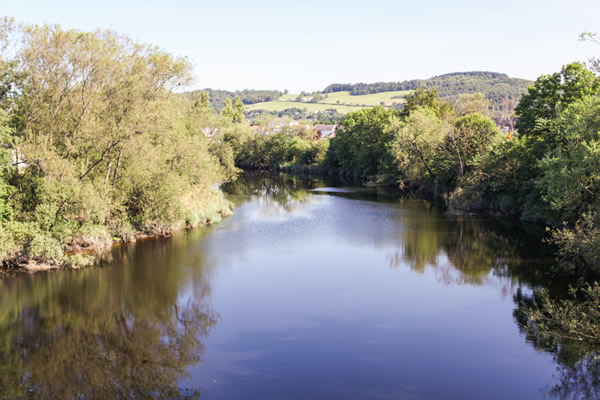
Using the red line below, you can see roughly where the original bridge resided.
[huge_it_maps id=”12″]
Recommended Reading
If you’re looking for some good books on William Wallace, then The Wallace Book is a great place to start. It contains a slew of scholarly articles examining the history and myths of the Scot. Michael Prestwich’s “The Battle of Stirling: An English Perspective” is extremely useful for this battle.
Andrew Fisher’s William Wallace is an immensely enjoyable biography–biography, but written for the layman. He tells the stories while also criticizing the sources, but he never loses the reader.
For those who want to trek the same roads and battlefields, I recommend Alan Young’s passionate, richly illustrated In the Footsteps of William Wallace.
